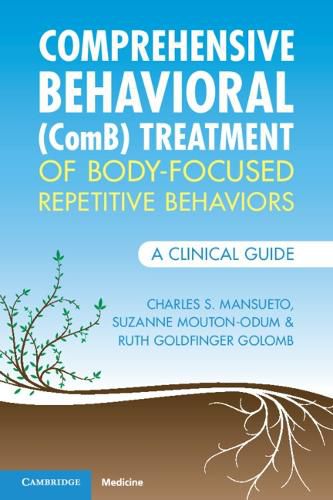Readings Newsletter
Become a Readings Member to make your shopping experience even easier.
Sign in or sign up for free!
You’re not far away from qualifying for FREE standard shipping within Australia
You’ve qualified for FREE standard shipping within Australia
The cart is loading…






More common than was previously believed, body-focused repetitive behaviors (BFRBs) affect as many as 1 in 20 people. Written by the experts who created and developed the ComB Model, it provides a practical and user-friendly manual for therapists on an effective, individualized treatment approach for BFRBs. It features the most up-to-date information on BRFBs and guides clinicians from conceptualization of the problem through all aspects of clinical treatment. The internal and external influences for hair-pulling and skin-picking disorders are addressed thoroughly and from a functional analytical perspective. A valuable case example illustrates exactly how specific concepts and techniques are implemented in therapy. Chapters cover preparing the client for treatment, encouraging healthy approaches to hair/skin care, preventing relapse, dealing with co-morbidities, trouble-shooting impediments to therapy and modifying treatment for children, adolescents, and their families. This book is the best single resource available for mental health professionals for conceptualizing and treating BFRBs.
$9.00 standard shipping within Australia
FREE standard shipping within Australia for orders over $100.00
Express & International shipping calculated at checkout
More common than was previously believed, body-focused repetitive behaviors (BFRBs) affect as many as 1 in 20 people. Written by the experts who created and developed the ComB Model, it provides a practical and user-friendly manual for therapists on an effective, individualized treatment approach for BFRBs. It features the most up-to-date information on BRFBs and guides clinicians from conceptualization of the problem through all aspects of clinical treatment. The internal and external influences for hair-pulling and skin-picking disorders are addressed thoroughly and from a functional analytical perspective. A valuable case example illustrates exactly how specific concepts and techniques are implemented in therapy. Chapters cover preparing the client for treatment, encouraging healthy approaches to hair/skin care, preventing relapse, dealing with co-morbidities, trouble-shooting impediments to therapy and modifying treatment for children, adolescents, and their families. This book is the best single resource available for mental health professionals for conceptualizing and treating BFRBs.